Kashmiri Food: Basic Overview
Common Ingredients
Common Cooking Methods
Courses
Meals
Key Taste
Eating Etiquette
Meal Presentation
Culinary Festivals
Influence and Fusion
Popular Types of Kashmiri Food
-
Curries
In Kashmiri cuisine, curries are characterized by their rich and aromatic sauces.
They are celebrated for their depth of flavor, during festive occasions.
-
Bread and doughs
Bread and dough-based foods in Kashmiri culture are essential to every meal, ranging from simple, unleavened flatbreads baked in clay ovens to more complex, leavened varieties that are often flavored with local ingredients.
These breads serve as the perfect accompaniment to rich curries and stews.
-
Vegetarian dishes
Vegetarian cuisine in Kashmir showcases the region’s abundance of fresh vegetables, legumes, and greens, prepared with a unique blend of spices.
-
Rice dishes
Rice is the cornerstone of Kashmiri meals, often served as the main dish rather than a side.
In this cuisine, rice is typically prepared with aromatic spices, nuts, fruits, and sometimes meats, embodying the region’s affinity for combining sweet and savory elements.
Kashmiri dishes are specialties originating from the Kashmir Valley in the Indian union territory of Jammu and Kashmir. Therefore, these delights are also a part of Indian food specialties.
They are a rich and diverse culinary tradition that reflects the region’s history and geography. The land from which these dishes spring up lies side by side with the mighty Himalayas and at an average elevation of nearly 2,000 meters above sea level.
Dishes from Kashmir are known for their sophisticated cooking techniques and unique flavors. The cuisine is heavily influenced by the Mughals, as well as Persian, Central Asian, and local traditions.
Rice is the staple food, often accompanied by meat (particularly lamb or goat), vegetables, and yogurt. Kashmiris are known for their love of meat, with mutton being a significant part of their diet.
The cuisine features thin, flavorful gravies without floating oil or masalas and makes extensive use of spices. Bread is not typically part of meals but is consumed with tea.
To uncover more interesting information relating to Kashmiri dishes, I suggest taking a peek through the dining etiquette of locals here along with some drinks pairing to go with the specialties.
21 Popular Kashmiri Dishes
To discover the specialties of Kashmir, you shouldn’t overlook the helpful filter that helps you see these dishes in alphabetical order, tastes, key ingredients, cooking methods, dish types, and global popularity.
Plus, I suggest taking a peek through some categories of Kashmir dishes, like the most popular options or even traditional and street food dishes.
Rajma Chawal
- Traditional
Rajma chawal is a great vegetarian curry and rice of Kashmiri, often enjoyed as a breakfast item in many Kashmiri houses. The dish is all about cooking red or kidney beans (rajma) in pureed tomatoes and onions before arranging them with rice (chawal).
Ideally, the broth of this curry is relatively thick thanks to the long cooking process of the beans. Plus, the addition of spices give rajma chawal a vibrant orange-brown color.
Kulcha
- Street Food
- Traditional
Kulcha is a leavened bread in Kashmir, often baked in a clay oven for a golden brown surface. This flatbread is a perfect duo for combining with many Indian curries.
Aside from the plain and doughy version, this round flatbread comes with fillings like cheese, meat, or vegetables. The bread is popular in North India thanks to its soft and fluffy texture for dipping in many dishes.
Kashmiri Pulao
- Traditional
Kashmiri pulao is a rice dish from Kashmiri cuisine that brings together saffron, spices, and broth. It is garnished with fried onions, nuts, raisins, and fresh fruits for a mildly sweet and aromatic dish.
This aromatic rice dish is believed to have a Persian origin and is popular in North India. This dish is often enjoyed on special occasions and is known for its delightful combination of flavors and textures.
Modur Pulao
- Traditional
Modur pulao is a rather sweet Kashmiri rice thanks to plenty of dried fruits and nuts. The rice is full of spices infusing every grain with golden saffron.
Interestingly, the rice is often cooked with a lot of ghee to keep the dish from drying. To balance the creaminess of modur pulao, you can pair it with something spicy.
Kashmiri Saag
- Traditional
Kashmiri saag is a dish of lightly cooked greens, such as spinach, with coconut, garlic, and spices. The green specialty is best eaten with rice or roti. As a Kashmiri version of saag, it adores the Persian influence. Kashmiri saag is mildly sweet and aromatic and can be made in a pressure cooker.
Khambir
- Traditional
Khambir is a type of bread in Ladakh, a region in Kashmir in northern India. It is made of whole wheat flour, yeast, salt, and sugar, and baked in a clay oven. The bread possesses a thick, round, and brown appearance along with a crispy crust. It is usually eaten for breakfast with butter tea, a beverage made of tea leaves, butter, salt, and yak milk.
Rogan Josh
- Traditional
Rogan josh is a curried meat dish from Kashmir, a region in northern India. This savory and brothy creation is made with lamb, mutton, or goat, and has a rich and aromatic red sauce.
The sauce is flavored with garlic, ginger, spices, and Kashmiri chilies, which are mild and paprika-like. As a traditional dish of Kashmiri cuisine, Rogan josh is usually served with rice or bread and is part of the Kashmiri multicourse meal called wazwan.
Dum Olav
- Street Food
- Traditional
Dum olav, or dum aloo, is a vivacious vegan curry boasting a spicy taste.
In Hindi, “dum” is “slow-cooked”, while “aloo” means “potato”.
Cooking Dum Aloo involves carefully braising potatoes with onions, veggies, and spices for hours, usually in the traditional cooking basin, Handi.
There are many ways to improve the flavor of the curry, such as deep-frying the potatoes before cooking or adding yogurt to the Handi. The best potato is to cook dum aloo with baby potatoes for extra sweetness.
Aab Gosht
- Traditional
Aab gosht is a traditional Kashmiri mutton curry characterized not by a spicy taste but by its tender milky meat.
People prepare aab gosh by first cooking mutton with spices until tender. Then, they simmer it with milk to create a creamy curry.
To bring out the best flavor of aab gosht, you should enjoy the succulent, aromatic meat with plain steamed rice.
Nadru Yakhni
- Traditional
Nadru yakhni is a curry dish in Kashmir centering around lotus stems, yogurt, and spices. The dish is a mild and creamy curry served with rice or roti.
Commonly, lotus stems are cooked until tender and then simmered in a yogurt-based sauce that is flavored with cardamom, cloves, cinnamon, aniseed, ginger, and salt. Thanks to the appearance of yogurt, the broth of nadru yakhni offers a semi-thick texture.
Khatte Baingan
- Traditional
Khatte baingan is an eggplant curry from Kashmir cooked in a spicy and sour gravy. The dish is made with tomatoes, tamarind, jaggery, and spices like fennel, nigella, and ginger for a thick texture.
Khatte baingan can be served with rice, or roti, thanks to the addictive sauce. The key feature of this dish is its sourness (khatte), typically achieved through the use of tamarind, yogurt, or sometimes raw mango powder (amchur).
Matschgand
- Traditional
Matschgand is a Kashmiri dish of cylindrical ground meatballs cooked in a spicy red gravy. With the sauce as the main highlight, the dish is flavored with Kashmiri chilies, fennel, ginger, and other spices.
The dish is best presented warm, along with rice or roti for combining with the gravy.
Shab Deg
- Traditional
Shab deg is a Kashmiri dish of turnip and mutton stew, cooked slowly overnight in a sealed pot. The name means “night cooking pot” in Persian, and reflects the long and slow cooking process.
Originally, shab deg was prepared by mothers to feed their families and neighbors in the cold winters.
Nadru Ke Kebab
- Street Food
- Traditional
Nadru ke kebab is a traditional lotus root kebab originating from Kashmir. These crunchy specialties are made with boiled and minced lotus stems, potatoes, spices, and herbs.
The mixture is then formed into patties for shallow frying. It is a vegan and gluten-free snack for serving with green chutney or a spicy gravy.
Haakh
- Traditional
Haakh is a traditional Kashmiri side dish made from lightly cooked greens, such as spinach, infused with coconut, garlic, and spices. Enjoyed with rice or roti, this simple, healthy dish is prepared in a pressure cooker to preserve its nutrients.
Characterized by its mild sweetness and aromatic flavor, haakh is a straightforward dish in Kashmiri households.
Lyodur Tschaman
- Traditional
Lyodur tschaman is a Kashmiri specialty with paneer as the main ingredient, a South Asian cottage cheese derived from buffalo milk. In this dish, paneer is delicately melted with a carefully selected blend of spices, including vibrant turmeric and fiery local red chilies.
Also, the addition of heavy cream thickens the mixture into a creamy, indulgent sauce. The result is a creamy creation for serving with various delicacies.
Tabak Maaz
- Traditional
Tabak maaz is a classic culinary creation of Kashmiri delicacy, serving as a part of the multi-course feast known as Wazwan. This dish consists of tender lamb ribs, meticulously cut to ensure the meat remains on the bones.
The preparation involves a two-step cooking process, with the ribs being simmered in a flavorful mixture. Then, they are deep-fried until the exterior turns delightfully crispy.
Tabak maaz is best enjoyed with rice or bread to savor the flavorful sauce and the meat of the ribs.
Rista
- Traditional
Rista is a key element of Kashmiri cuisine, particularly noted in the lavish Wazwaan feast. This dish features finely minced lamb enhanced with local saffron.
These meatballs involve combining a spiced lamb paste, which is then browned and simmered in saffron-laced lamb stock. Often, these rista meatballs are served directly in a savory sauce of red color.
Goshtaba
- Traditional
Goshtaba is a celebrated Kashmiri delicacy of mutton meatballs simmered in a spicy yogurt gravy. This dish holds a place of honor in significant ceremonies and functions, notably the grand wazwan feast.
Traditionally served as the final meat course before dessert, declining Goshtaba is culturally seen as an affront to the host’s hospitality. Rich and deeply flavorful, it pairs great with rice or bread to soak up the flavorful sauce.
Sheermal
- Street Food
- Traditional
Sheermal is a traditional Kashmiri bread, known for its slightly sweet flavor and soft, rich texture. Originating from the Persian culinary tradition, sheermal is a saffron-flavored flatbread with a distinctive richness.
The addition of saffron not only imparts a beautiful golden hue but also a subtle aroma and taste, making sheermal a delightful accompaniment to both savory and sweet dishes.
In Kashmiri cuisine, it is often served alongside dishes like rogan josh or enjoyed with tea. Its preparation involves baking in a tandoor or oven, resulting in a tender crumb.
Kashmiri Shufta
- Traditional
Shufta is a traditional dessert from Kashmiri cuisine, celebrated for its rich and vibrant mix of flavors.
This delicately sweet dish is a festive amalgamation of dry fruits and nuts like almonds, walnuts, pistachios, and cashews, combined with candied fruits, all coated in a syrup made from sugar, saffron, and various spices including cardamom and cinnamon.
Shufta is often prepared during important Kashmiri festivals and celebrations, serving as a symbol of hospitality and generosity.
What Is the Dining Etiquette in Kashmir?
The dining etiquette in Kashmir reflects the region’s rich cultural heritage and the communal spirit of its people. Here are the features that are crucial to dining in Kashmir:
Once you’ve wrapped your head around the etiquette needed for a dinner in Kashmir, you should uncover the perfect pairing of beverages to have with these specialties.
What Kashmiri Dishes to Have with Beverages?
When enjoying beverages with Kashmiri cuisine, certain pairings can significantly enhance the dining experience by complementing the rich and aromatic flavors of the dishes. Here are some recommended pairings:
Don’t forget to share these Kashmiri specialties if you like them. Any comment or question will be greatly welcome!



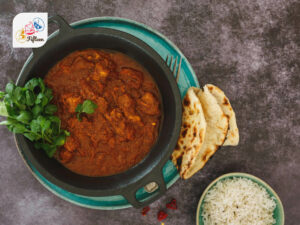
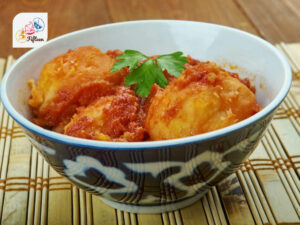
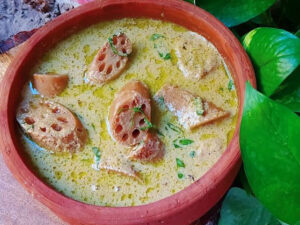
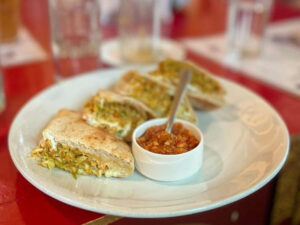
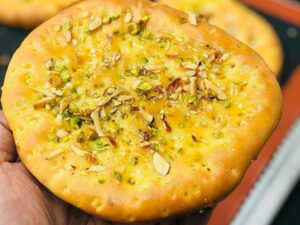
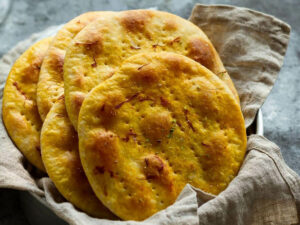
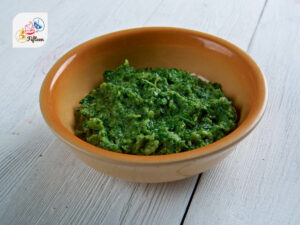
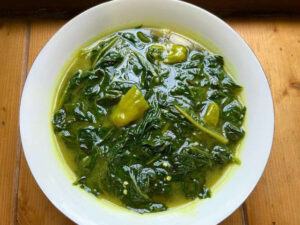
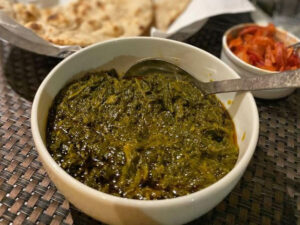
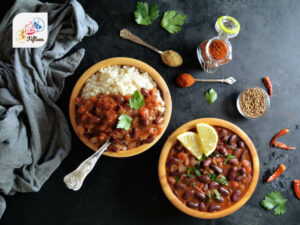
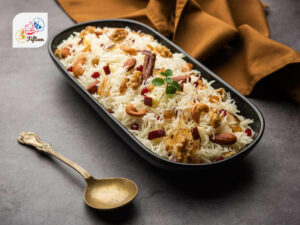
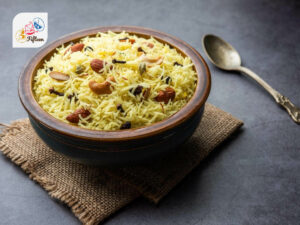
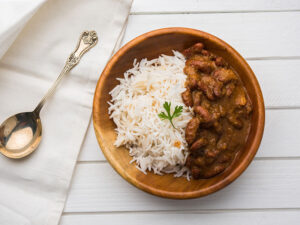
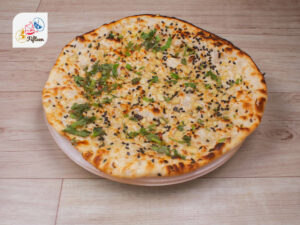
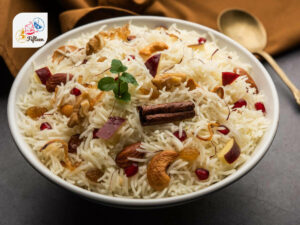
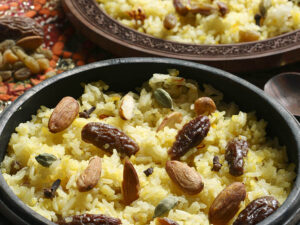
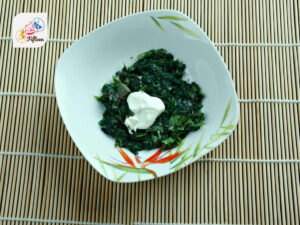

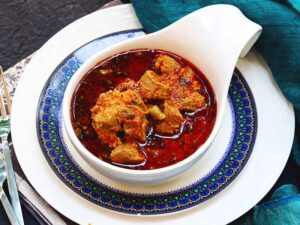
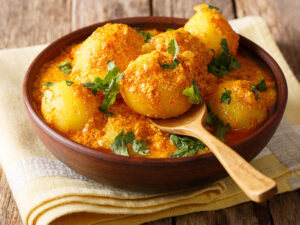
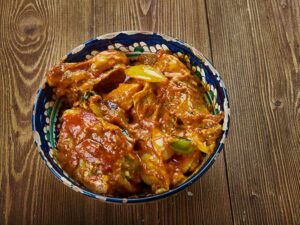
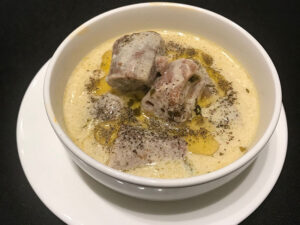
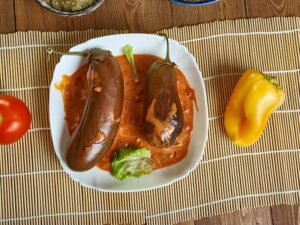
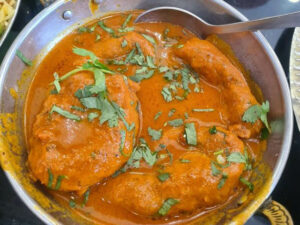
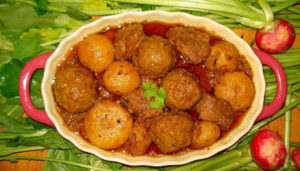
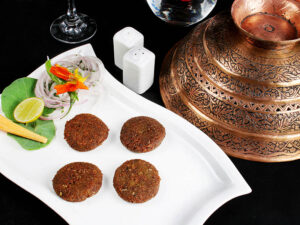
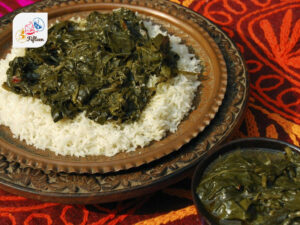
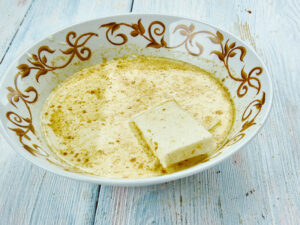
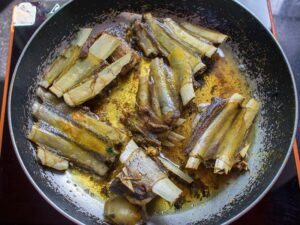
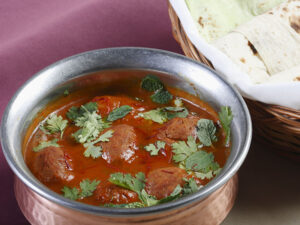
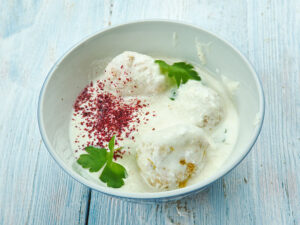
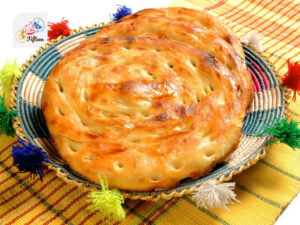
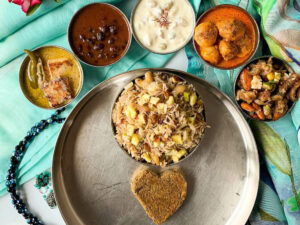
Jamie Scott
Editor in Chief, Senior Content Writer
Expertise
Home Cooking, Meal Planning, Recipe Development, Baking and Pastry, Food Editor, Cooking-video Maker, Western Food Evaluation Expert
Education
Le Cordon Bleu College of Culinary Arts
Local Community College, New York, NY
Jamie Scott is a skilled culinary expert and content creator specializing in Western cuisine. With over 15 years in the culinary field and formal training from Le Cordon Bleu, Paris, Jamie deeply understands how to blend nutrition with delicious flavors. His passion for cooking matches his commitment to making healthy eating accessible and enjoyable.
On Fifteen.net, Jamie brings a fresh perspective to classic dishes and beverages, offering readers insightful recipes, cooking tips, and a fresh view on meal planning that emphasizes taste, health, and simplicity.